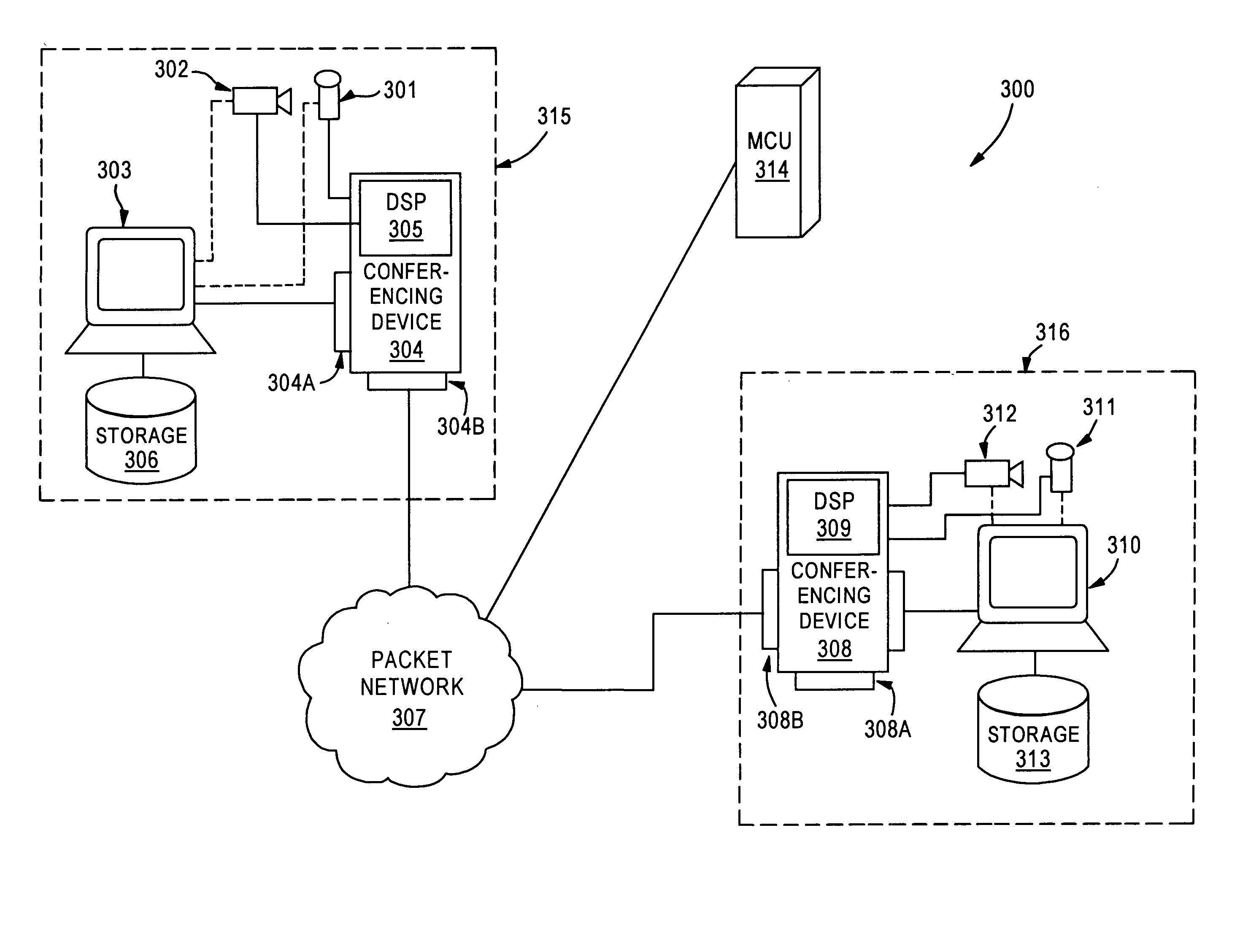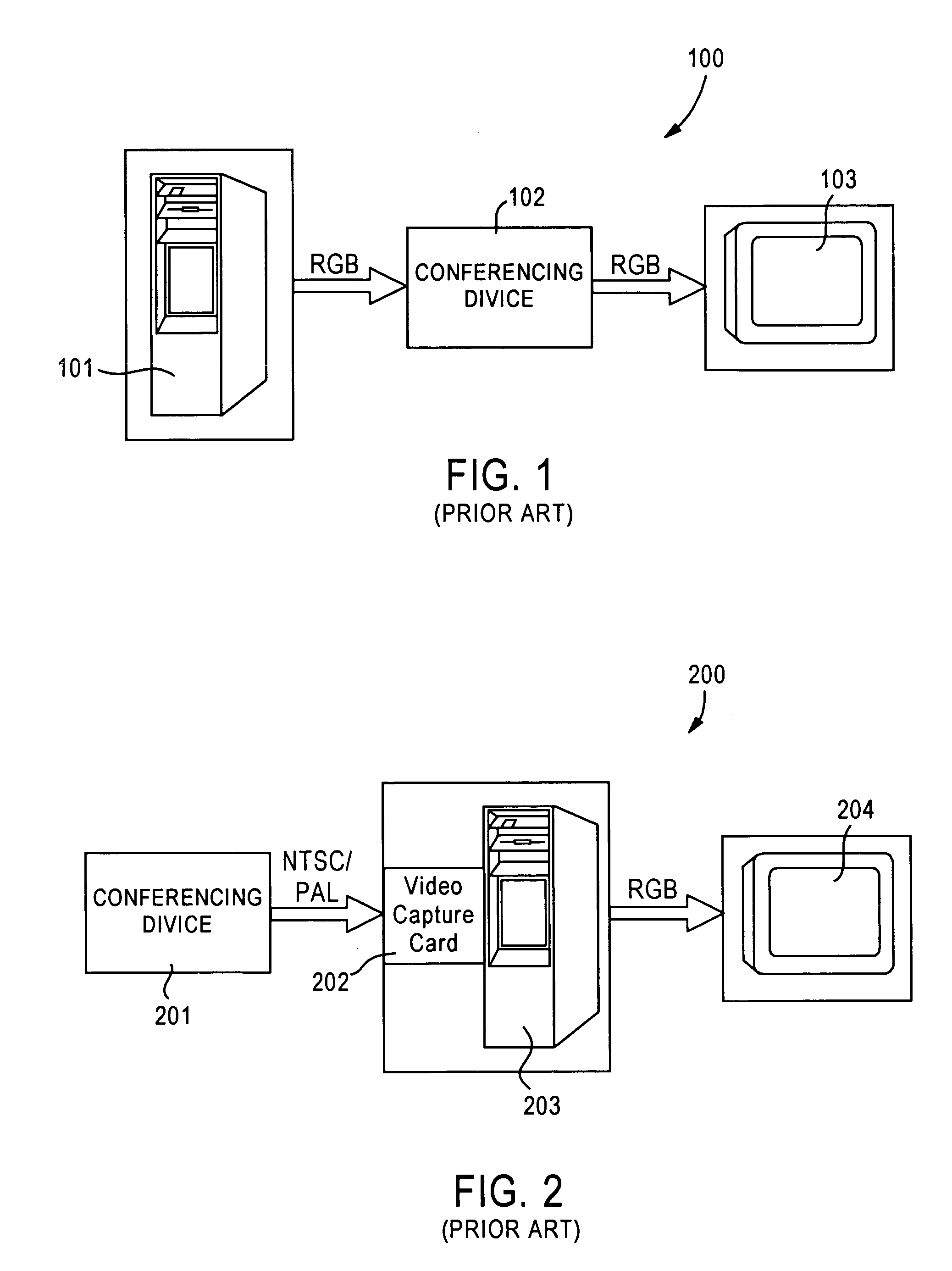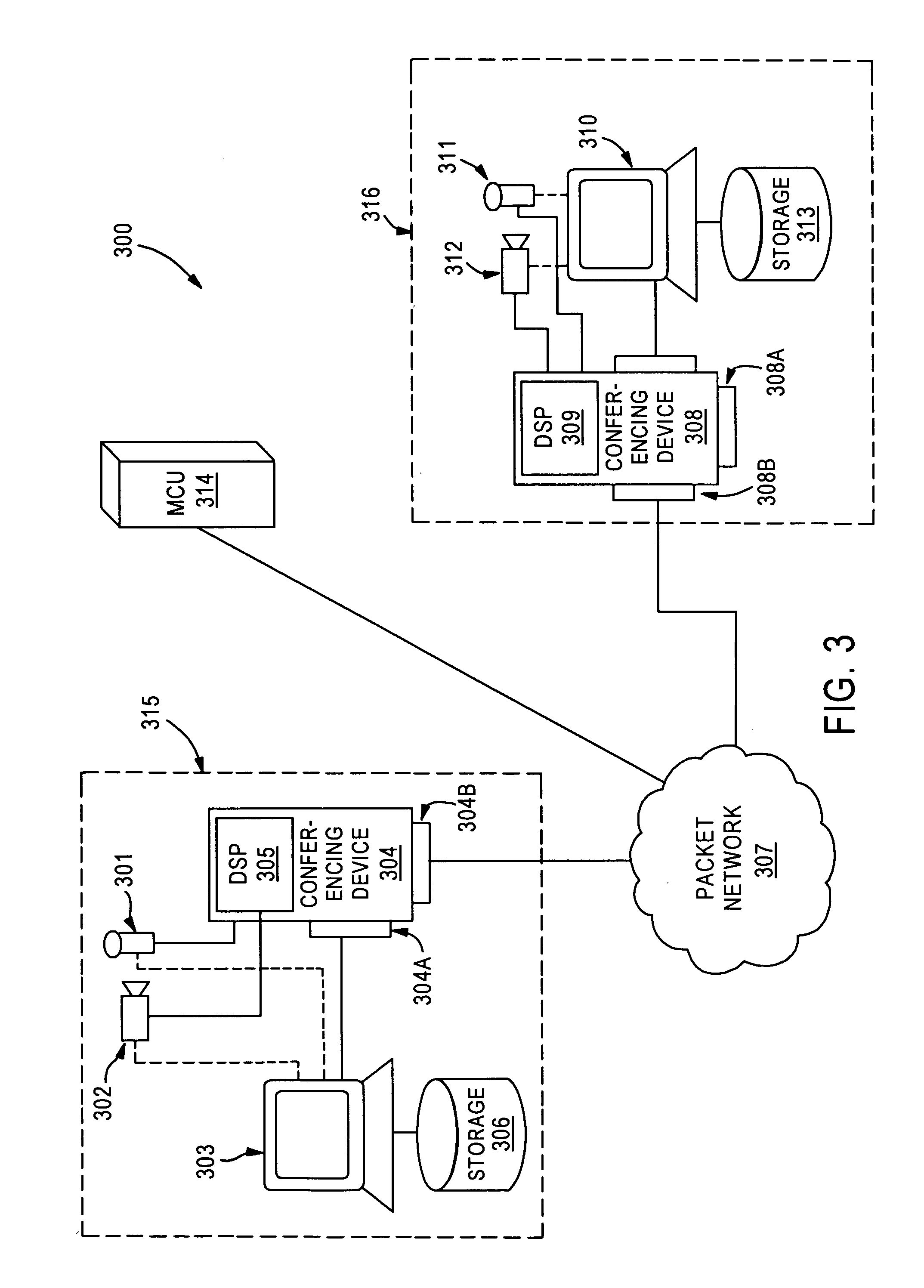Digital links for multi-media network conferencing
a multi-media network and digital link technology, applied in the field of data collaboration networks, can solve the problems of reducing the quality of a/v transmission, reducing the quality of videoconferencing systems, and introducing additional complexity in data synchronization of conventional hardware-based systems, so as to improve the quality of a/v data, the effect of minimizing availability and support problems
- Summary
- Abstract
- Description
- Claims
- Application Information
AI Technical Summary
Benefits of technology
Problems solved by technology
Method used
Image
Examples
Embodiment Construction
[0018]FIG. 3 illustrates a videoconferencing and data collaboration system 300 under a first embodiment of the invention. System 300 shows a videoconferencing and data collaboration topology, where a first user system 315 communicates through a packet network 307 to a second user system 316 via network interface module 304B. A multipoint controller unit (MCU) 314 is coupled to the packet network 307. While the illustration in FIG. 3 discloses only two user systems (315, 316), it should be appreciated by those skilled in the art that three or more user systems may be coupled to the packet network 307 without deviating from the spirit and scope of the invention.
[0019] The first user system 315 includes a first processing terminal 303, which is coupled to a storage unit 306. Storage unit 306 may be a hard drive, a removable drive, recordable disk, or any other suitable medium capable of storing computer and A / V data. Terminal 303 is further connected to a conferencing device 304, via ...
PUM
 Login to View More
Login to View More Abstract
Description
Claims
Application Information
 Login to View More
Login to View More - R&D
- Intellectual Property
- Life Sciences
- Materials
- Tech Scout
- Unparalleled Data Quality
- Higher Quality Content
- 60% Fewer Hallucinations
Browse by: Latest US Patents, China's latest patents, Technical Efficacy Thesaurus, Application Domain, Technology Topic, Popular Technical Reports.
© 2025 PatSnap. All rights reserved.Legal|Privacy policy|Modern Slavery Act Transparency Statement|Sitemap|About US| Contact US: help@patsnap.com



